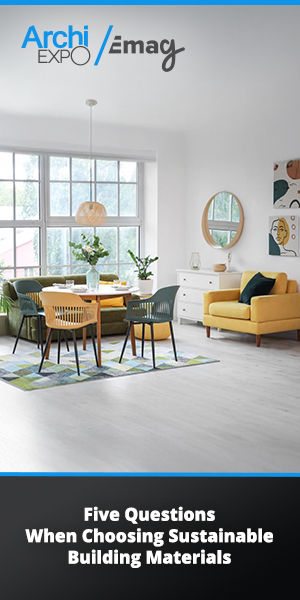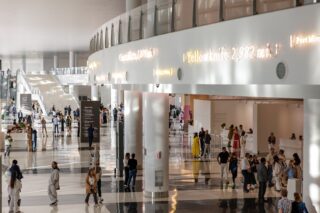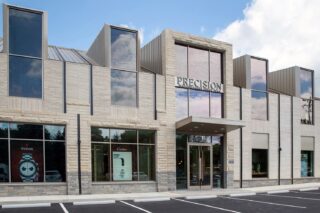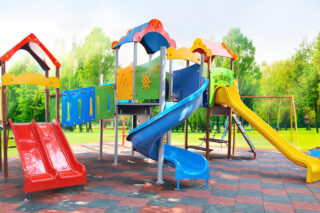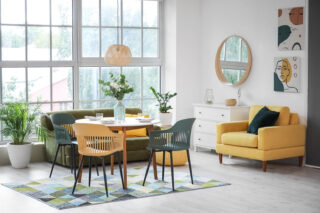Foodles’ rapid expansion across France and beyond illustrates how connected food services, sustainable design, and thoughtful spatial planning are reshaping the modern workplace experience.
Since the pandemic reshaped the ways we work, architecture and design professionals have been tasked with recreating the workspace as a place where people want to be. In our 2022 feature, How to Entice Employees to Return to the Office through Design, we argued that design must go beyond desks and lighting—it must offer comfort, culture, and services that employees miss when working from home. At the time, we highlighted two French companies experimenting with communal kitchens and robotic or digital canteens. Three years later, the momentum has shifted. A growing number of companies are turning to thoughtful, tech-enabled workplace amenities as an integral part of office design.
This is where Foodles, a French food-tech company, is making a strong mark. The company has doubled the size of its Marseille logistics hub in the summer of 2025, recently opened a site in Fréjus, expanded to London in 2022, and is preparing a new hub in Strasbourg. The strategy reflects a broader trend: the return to the workplace is not just about desks and meeting rooms, but about making employees’ daily experience as seamless and pleasant as possible. Connected fridges, smart logistics, and RSE-driven design are becoming part of the architectural vocabulary of the contemporary office.
Connected Refrigerators as Design-Tech Anchors
In Marseille, the newly expanded hub includes a showroom that makes a striking statement: the connected refrigerator has evolved from a utilitarian appliance into a central design and service element. Each Foodles fridge is equipped with RFID technology, allowing the system to track stock in real time, manage product rotation, and provide employees with 24/7 access to fresh meals.
“The advantage of the RFID tag is that the fridge scans what’s inside as soon as the door closes,” Gaïa Di Sangro, Account Manager PACA Foodles, said during our visit. “It immediately knows what the guest has taken.”
This technology carries implications for architects and designers. Connected fridges are not just plug-and-play objects; they require deliberate spatial integration—visibility, circulation, lighting, and accessibility matter. When well integrated, they can anchor communal spaces and reinforce workplace culture.
Foodles has already installed more than a thousand connected fridges across France, Benelux, and the UK. As more companies adopt these solutions, architects will be asked not only to make room for the hardware but to create environments that encourage employees to use and enjoy them. This is design that supports everyday rituals, not just infrastructure.


RSE as a Framework for Design Consistency
Foodles’ growth is anchored in its sustainability commitments. The company has been mission-based since 2022, earned B Corp certification in 2023, and reached Ecovadis Gold status in 2024. These credentials are reflected in its operational choices. More than 99% of packaging is recyclable, with redistribution of unsold meals to the Restos du Cœur and transformation of expired goods into bio-waste. The company is also preparing to standardize its waste-management system across all hubs through a single subcontractor—a project currently being finalized.
“We want the same waste-management subcontractor for all our hubs,” Lionel David, Foodles Manager, Marseille Hub, told ArchiExpo e-Magazine during our visit. “That’s part of our RSE approach and our commitment as a B Corp company.”
For architects and designers, this kind of operational consistency is far from incidental. It informs how spaces are planned: where recycling points are placed, how waste flows are organized, and what utilities are embedded into floors and walls. By integrating these systems early, rather than adapting them later, designers can align aesthetics and functionality with RSE requirements.
Foodles is also pushing nutritional standards as part of its sustainability ethos. Over 70% of the meals placed in its fridges are Nutri-Score A or B. This emphasis on health and responsibility echoes the broader wellness movement shaping the future workplace. For designers, it’s another signal that food services should no longer be relegated to basements or service corridors—they’re becoming part of the public face of the office.
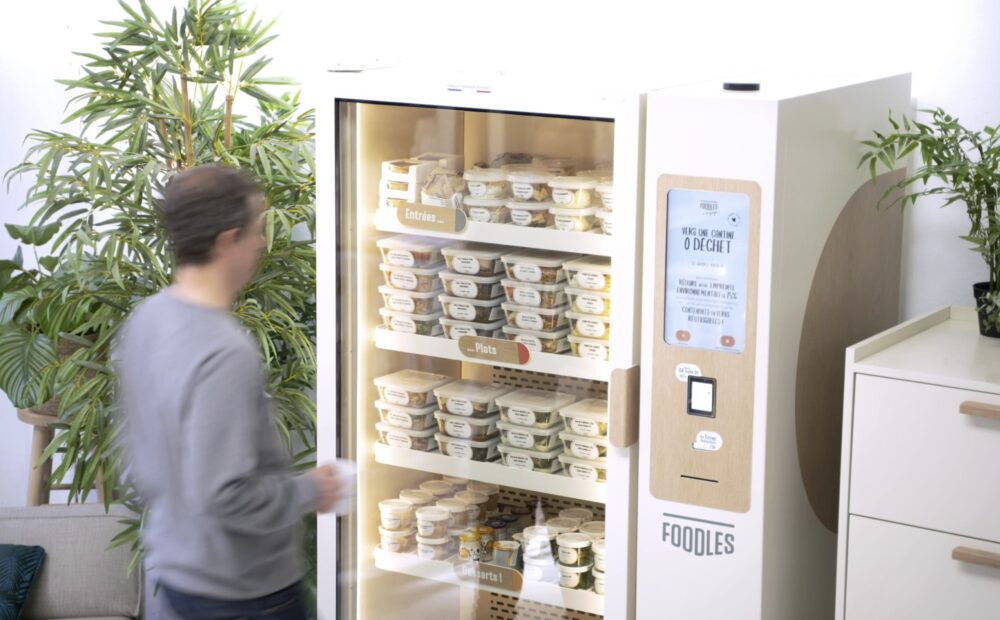
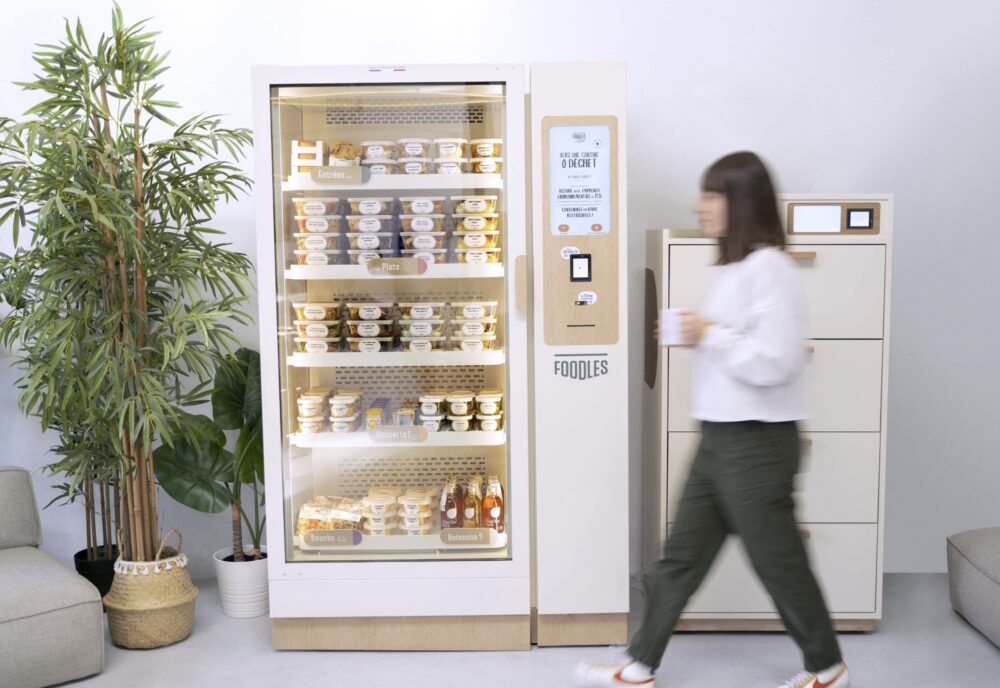
A Networked Expansion Model
The Marseille expansion, inaugurated this summer, is only one piece of a larger puzzle. Foodles opened its London hub in 2022, added Bordeaux in 2024, and is preparing Strasbourg next. In Fréjus, the team is relocating to Puget-sur-Argens, where the cold-room capacity will triple. Lyon is also expanding, with a move to a facility two to three times larger than its current footprint.
“We’re really expanding everywhere in France,” Lionel David said. “Fréjus is moving, Lyon is growing, Strasbourg is coming, and London is already open.”
Each of these hubs follows a coherent architectural and operational strategy developed with the same project management partner, ensuring a continuity of spatial identity across regions. In Marseille, this meant a total of 700 m², with 530 m² dedicated to logistics and 170 m² to office and showroom spaces—a scale and configuration that can be replicated elsewhere.
For designers, the significance is twofold. First, expansion on this scale signals strong demand for spaces that integrate food service and workplace experience. Second, it demonstrates that logistics and design can be developed in parallel: cold rooms, service docks, and employee areas don’t need to be hidden away. They can form part of an ecosystem that contributes to workplace identity.
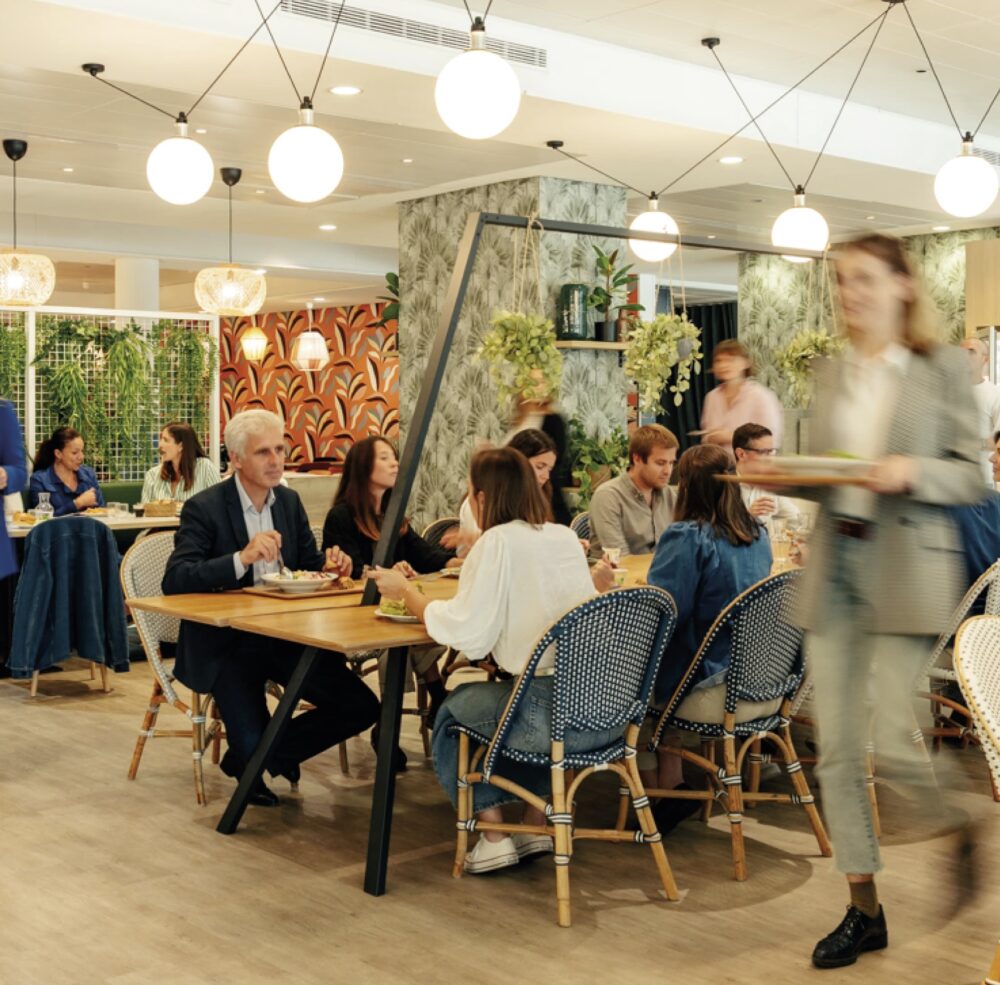

Looking Ahead: Eat, Pause, Connect
Foodles’ Marseille hub is more than an industrial facility; it is a touchpoint in a new era of workplace design. For architects and designers, the message is clear: as companies seek to bring employees back into the office, they are investing in tangible, sensory experiences—food, light, comfort, community.
Connected refrigerators, RSE frameworks, and a networked approach to expansion are reshaping how shared spaces are imagined. They create opportunities to rethink how kitchens, break areas, and food services interact with architecture. If workplace design once focused on desks and meeting rooms, the next chapter may well be written in quality spaces where employees gather to eat, pause, and connect.
Foodles offers one example of what that future can look like—a future where design and infrastructure work hand in hand to make the office not just functional, but worth returning to.


